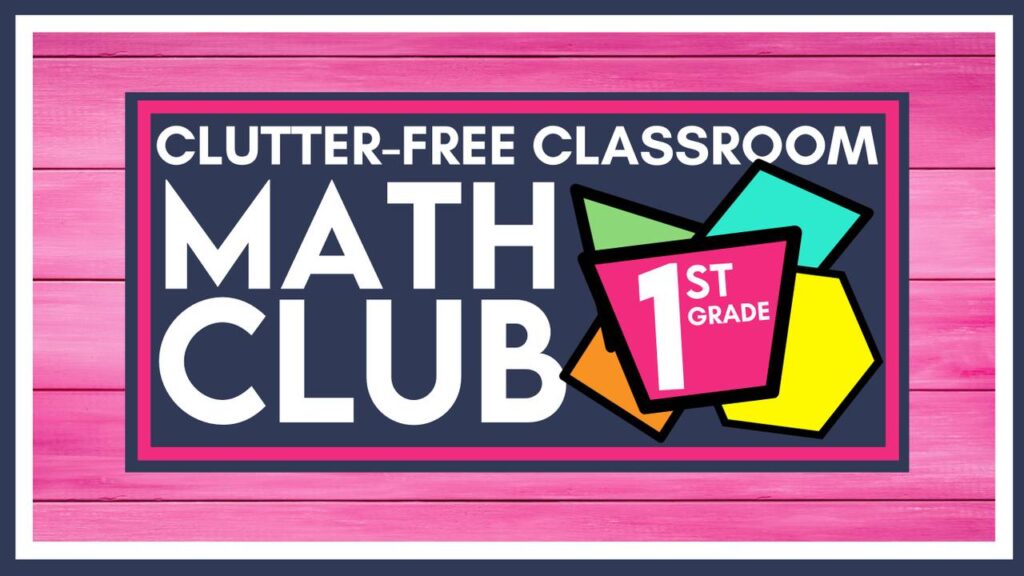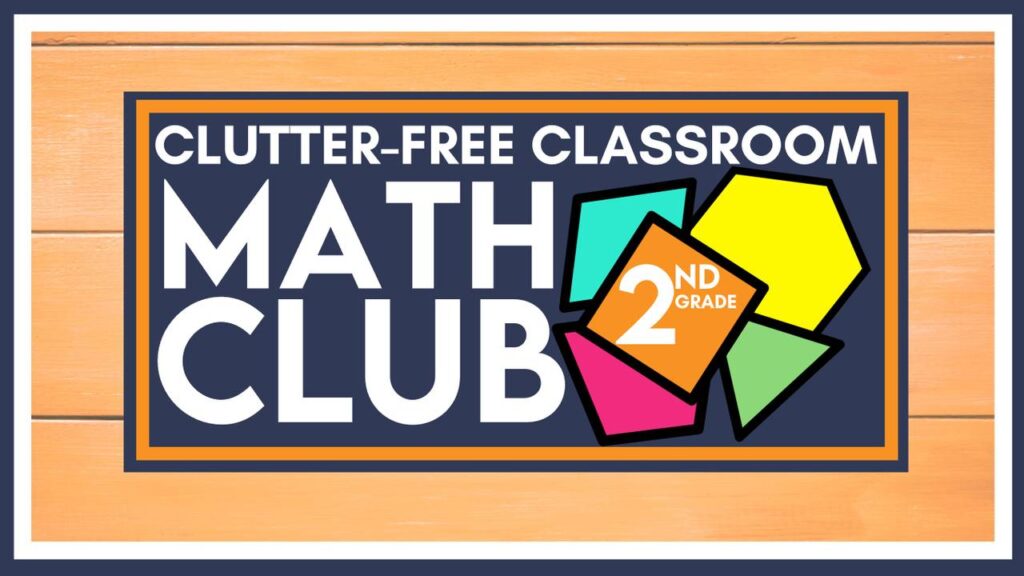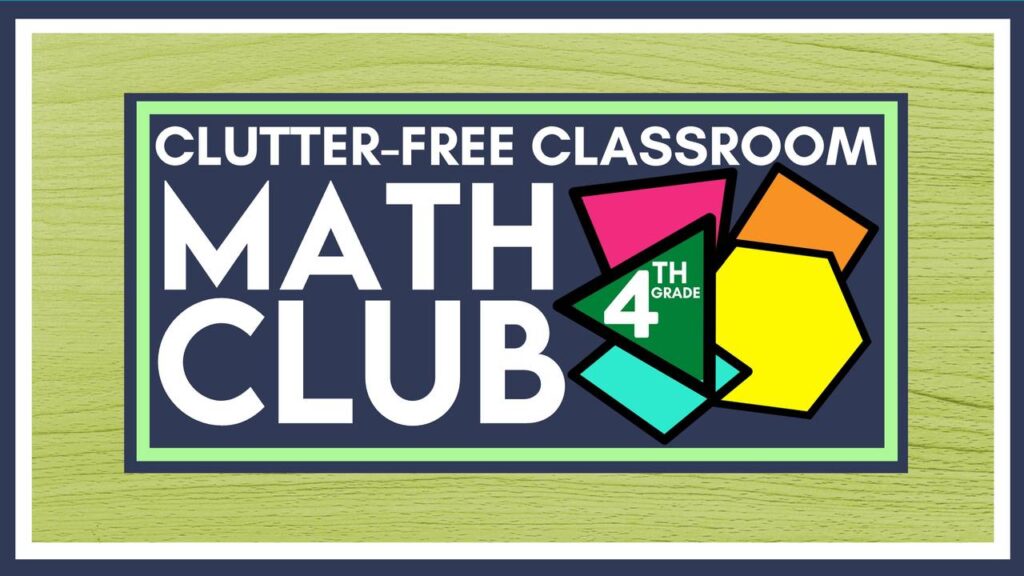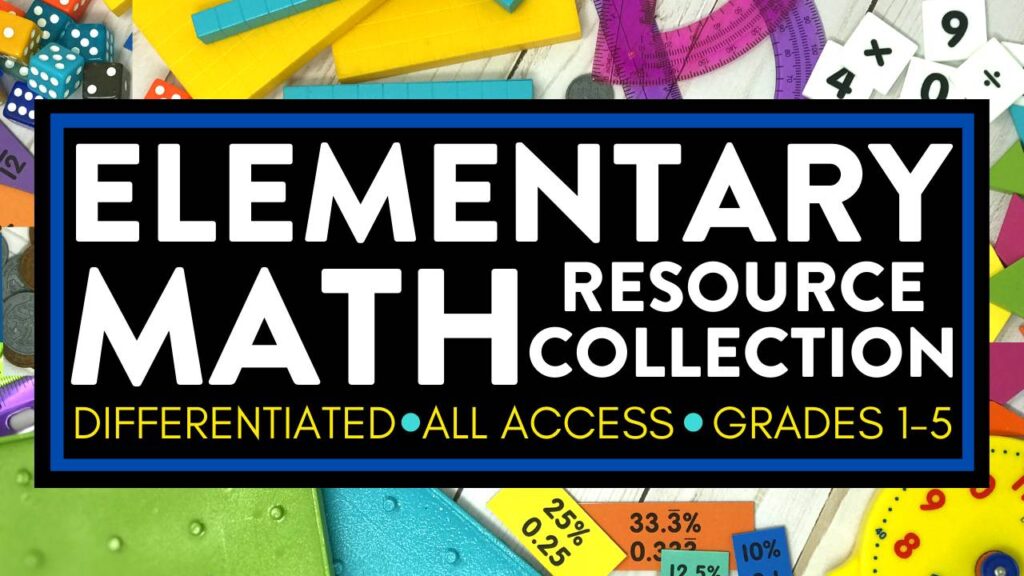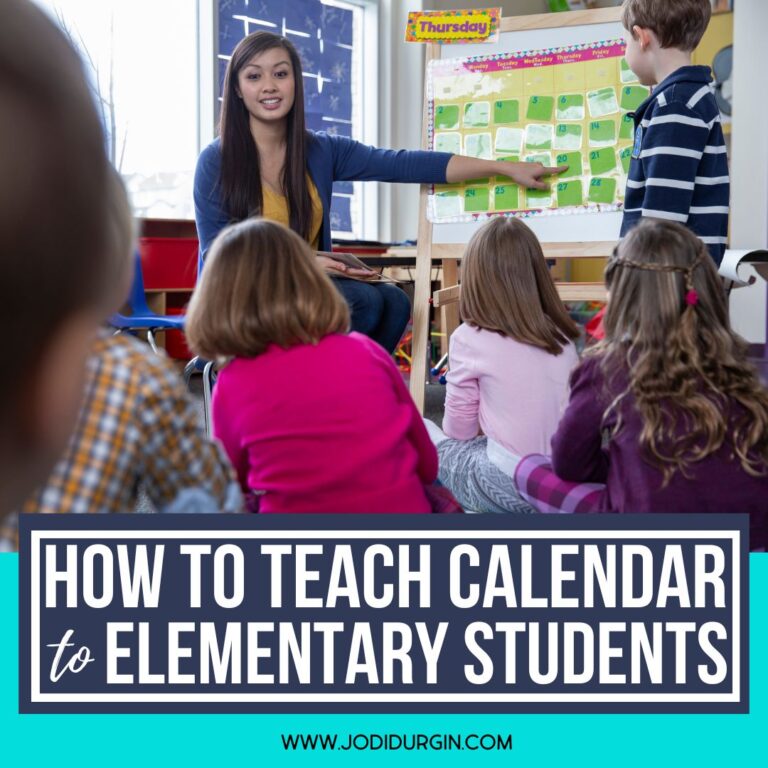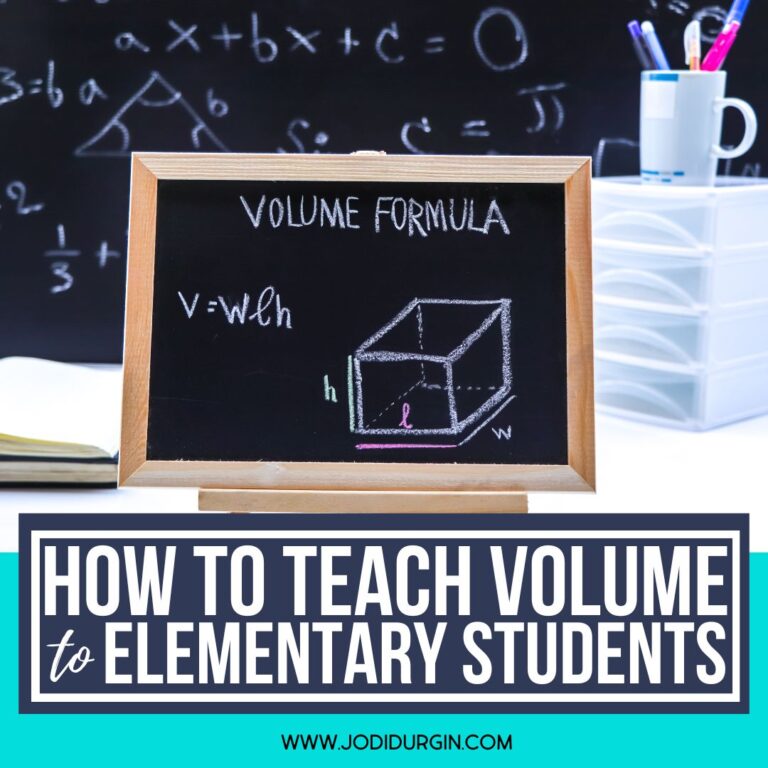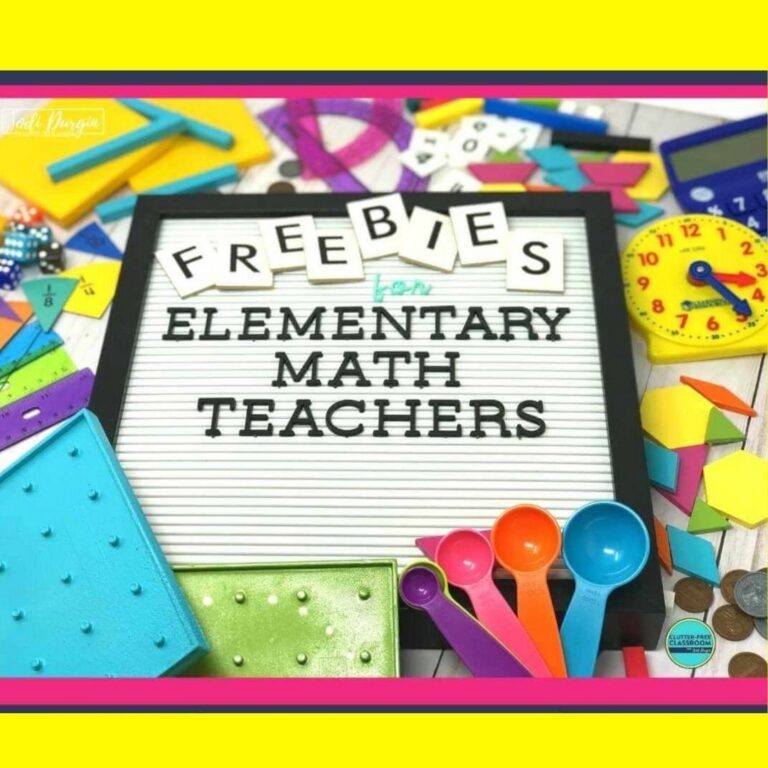If you are an elementary teacher looking for tips and ideas for how to teach multiplication, then you found the right place! Learn what multiplication is, why it’s important, what your students need to know, and get 5 helpful tips for teaching it in a fun and engaging way. Read all about teaching multiplication below!

What is Multiplication?
Multiplication is the result of combining groups of equal sizes. Students start learning about multiplication in second grade, when they are introduced to the idea of repeated addition. In third grade, students are introduced to the idea of multiplication as: # of groups x # in each group = total.
Why is Multiplication Important?
It is important for students to learn multiplication because it is one of the four main arithmetical operations. It is beneficial to understand multiplication because repeated addition, equal groups and arrays are all around us. Multiplication helps us find the total number of items quickly
What Multiplication Skills Do Students Need to Know?
Below are the Common Core and TEKs standards that relate to multiplication that define what students should be able to do by the end of the school year.
Common Core Standards
Below are the CCSS related to how to teach multiplication.
2nd Grade
- Use addition to find the total number of objects arranged in rectangular arrays with up to 5 rows and up to 5 columns; write an equation to express the total as a sum of equal addends. (2.OA.C.4)
3rd Grade
- Interpret products of whole numbers, e.g., interpret 5 x 7 as the total number of objects in 5 groups of 7 objects each. For example, describe a context in which a total number of objects can be expressed as 5 x 7. (3.OA.A.1)
- Apply properties of operations as strategies to multiply and divide. 2 Examples: If 6 x 4 = 24 is known, then 4 x 6 = 24 is also known. (Commutative property of multiplication.) 3 x 5 x 2 can be found by 3 x 5 = 15, then 15 x 2 = 30, or by 5 x 2 = 10, then 3 x 10 = 30. (Associativeproperty of multiplication.) Knowing that 8 x 5 = 40 and 8 x 2 = 16, one can find 8 x 7 as 8 x (5 + 2) = (8 x 5) + (8 x 2) = 40 + 16 = 56. (Distributive property.) (3.OA.B.5)
- Multiply one-digit whole numbers by multiples of 10 in the range 10-90 (e.g., 9 x 80, 5 x 60) using strategies based on place value and properties of operations. (3.NBT.A.3)
- Determine the unknown whole number in a multiplication or division equation relating three whole numbers. For example, determine the unknown number that makes the equation true in each of the equations 8 x ? = 48, 5 = __ / 3, 6 x 6 = ? (3.OA.A.4)
- Fluently multiply and divide within 100, using strategies such as the relationship between multiplication and division (e.g., knowing that 8x 5 = 40, one knows 40 /·5 = 8) or properties of operations. By the end of Grade 3, know from memory all products of two one-digit numbers. (3.OA.C.7)
4th Grade
- Interpret a multiplication equation as a comparison, e.g., interpret 35 = 5 × 7 as a statement that 35 is 5 times as many as 7 and 7 times as many as 5. Represent verbal statements of multiplicative comparisons as multiplication equations. (4.OA.A.1)
- Multiply a whole number of up to four digits by a one-digit whole number, and multiply two two-digit numbers, using strategies based on place value and the properties of operations. Illustrate and explain the calculation by using equations, rectangular arrays, and/or area models. (4.NBT.B.5)
5th Grade
- Fluently multiply multi-digit whole numbers using the standard algorithm. (5.NBT.B.5)
TEKS
Below are the TEKS related to how to teach multiplication.
2nd Grade
- Model, create, and describe contextual multiplication situations in which equivalent sets of concrete objects are joined. (2.6.A)
3rd Grade
- Determine the total number of objects when equally-sized groups of objects are combined or arranged in arrays up to 10 by 10; (3.4D)
- Describe a multiplication expression as a comparison such as 3 x 24 represents 3 times as much as 24; (3.5C)
- Represent multiplication facts by using a variety of approaches such as repeated addition, equal-sized groups, arrays, area models, equal jumps on a number line, and skip counting; (3.4E)
- Use strategies and algorithms, including the standard algorithm, to multiply a two-digit number by a one-digit number. Strategies may include mental math, partial products, and the commutative, associative, and distributive properties; (3.4G)
- Determine the unknown whole number in a multiplication or division equation relating three whole numbers when the unknown is either a missing factor or product; and (3.5D)
- Recall facts to multiply up to 10 by 10 with automaticity and recall the corresponding division facts; (3.4F)
4th Grade
- Solve with fluency one- and two-step problems involving multiplication and division, including interpreting remainders. (4.4.H)
5 Tips for How to Teach Multiplication
Below are 5 helpful tips for teaching multiplication to elementary students.
1. Read Aloud Picture Books that Teach Multiplication
Reading aloud picture books is a great way to integrate literacy into your math block and present information in a different way. Our favorite picture books for teaching multiplication are Amanda Bean’s Amazing Dream: A Mathematical Story by Cindy Neuschwander, The Lion’s Share: A Tale of Halving Cake and Eating It, Too by Matthew McElligot and Each Orange Had 8 Slices: A Counting Book by Paul Giganti. Check out the full list of math picture books we recommend!
2. Offer Hands On Learning Experiences
Hands-on math experiences help students make connections, remember their learning, and develop a deep conceptual understanding of the content. You can make any lesson interactive and engaging by offering math manipulatives. Our favorite math manipulatives for teaching multiplication are dice, dinosaur counters, bear counters, bug counters and number tiles.
3. Explicitly Teach Related Math Vocabulary
Teaching math vocabulary is essential for all students, but it is especially beneficial for students who speak English as a second language and students with learning differences. Key vocabulary terms for multiplication are addition, addends, sum, total, equation, columns, rows, array, rectangular, multiply, product, equivalent, multiplication, sets, multiplier, multiplicand, multiply, multiples, factor, product, unknown, expression, groups of equal jumps, multiplication table, fact family, number line, skip counting and partial products.
4. Give Students Opportunities to Apply Multiplication to the Real World
Learning becomes more meaningful when students understand how it connects to the real world. Students are more engaged and invested in their learning. Some examples of ways we use multiplication in the real world are calculating arrival times, the amount of weeks in a month, while photographing and when determining the area of a space. Project based learning and word problems are examples of opportunities for students to apply their learning to real world situations.
5. Encourage Parent Involvement
Parent participation in math is essential because it impacts students’ attitude toward math, proficiency levels this school year, and future success in their math education. Be sure to keep communication open with families and share ways they can support their children in their math learning. Some examples of ways they can practice multiplication at home are to quickly count equal groups or arrays in daily life such as the total amount of eggs in a container.
In closing, we hope you found this information about how to teach multiplication helpful!

